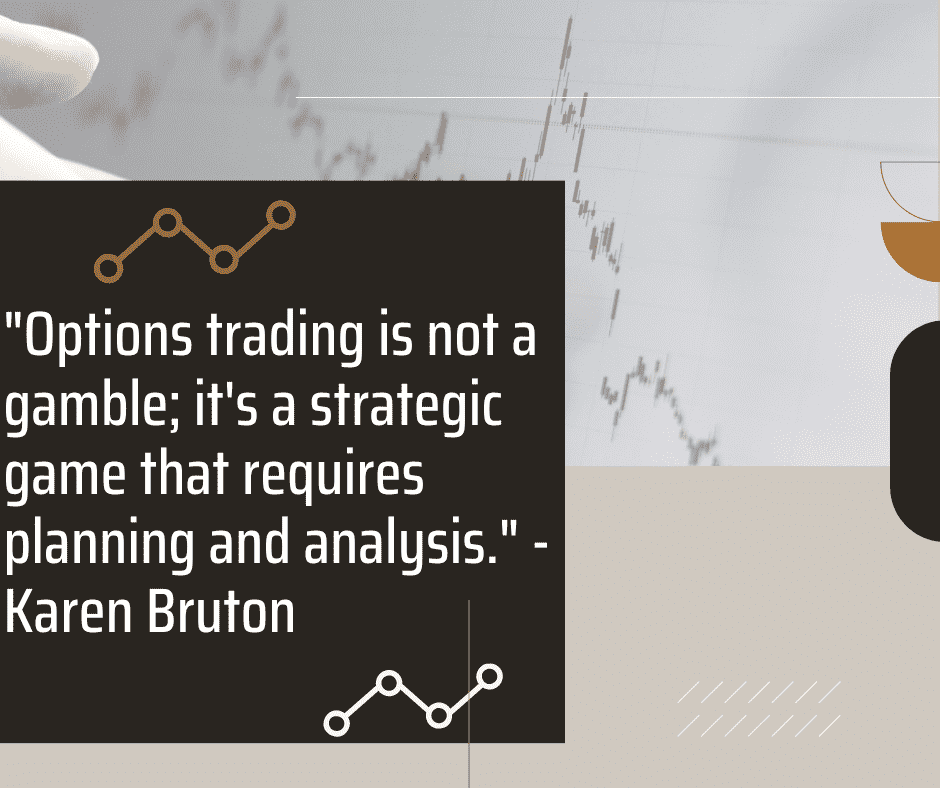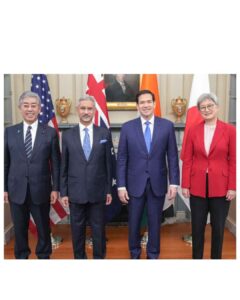
Introduction
The idea of options trading emerges as a beacon of possibility for smart investors and traders in the world of modern finance, where opportunities abound and risks overlap.
Options trading, with its potential for substantial gains and carefully managed risks, stands as a captivating avenue within the world of finance.
Understanding the specifics of options trading can provide you with a special set of tools to help you deal with the volatility and unpredictability that define the market, whether you’re an experienced investor or a curious newbie.
What is Options Trading?
Options are financial derivatives, meaning their value is derived from an underlying asset, such as stocks, commodities, or indices.
These contracts provide participants with a flexible tool to speculate on price movements, hedge against potential losses, generate income, and create diverse trading strategies.
The Essence of Options
At its core, an option is a financial derivative that grants the holder the right, but not the obligation, to buy (call option) or sell (put option) a specific asset, known as the underlying asset, at a predetermined price (strike price) within a specified timeframe (expiration date).
Call and Put Options: The Building Blocks
Call-and-put options are the fundamental building blocks of options trading, offering traders the opportunity to speculate on price movements in the financial markets.
Call Options: Betting on Price Increases
A call option is a contract that gives the owner the right, but not the obligation, to purchase the underlying asset at an agreed-upon price (the strike price) before the option expires. Call options are typically used when an investor expects the price of the underlying asset to rise.
Example of a Call Option:
Suppose you’re interested in Company XYZ, whose current stock price is $50. You believe the price will increase significantly in the next few months. To capitalize on this potential gain, you decide to purchase a call option with a strike price of $55 and an expiration date of three months from now. You pay a premium of $3 for this option.
Now, there are two scenarios at expiration:
Scenario 1: Stock Price Below Strike Price (Not Profitable)
If the stock price remains below $55 at expiration, your call option will expire worthless. You lose the $3 premium you paid, but your potential losses are limited to this amount.
Scenario 2: Stock Price Above Strike Price (Profitable)
If the stock price rises above $55, say to $60, your call option becomes profitable. You can exercise the option and buy the stock at the lower strike price of $55, even though the market price is $60. Your net gain is ($60 – $55) – $3 (premium) = $2.
Put Options: Betting on Price Declines
A put option is a contract that gives the holder the right but not the obligation, to sell an underlying asset at a predetermined price (strike price) before the option’s expiration date. Put options are typically used when an investor anticipates that the price of the underlying asset to decrease.
Example of a Put Option:
Suppose you’re observing the same company, XYZ, but this time you believe its stock price will decrease due to upcoming market challenges. You decide to purchase a put option with a strike price of $45 and the same three-month expiration date. The premium for this put option is $2.
Here are the two scenarios at expiration:
Scenario 1: Stock Price Above Strike Price (Not Profitable)
If the stock price remains above $45 at expiration, your put option will expire worthless. Your loss remains restricted to the $2 premium you paid to purchase the option.
Scenario 2: Stock Price Below Strike Price (Profitable)
If the stock price falls below $45, let’s say to $40, your put option becomes profitable. You can exercise the option and sell the stock at the higher strike price of $45, even though the market price is $40. Your net gain is ($45 – $40) – $2 (premium) = $3.

Key Components of Options
Understanding the components that define options is essential for effective trading:
- Strike Price: The predetermined price at which the underlying asset will be bought or sold.
- Expiration Date: The date on which the option contract expires, after which it becomes void.
- Premium: The price paid by the option buyer to the option seller for the right conveyed by the option.
- Intrinsic Value: The value an option would have if it were exercised immediately. In the case of call options, it’s the difference between the asset’s current price and the strike price. For put options, it’s the difference between the strike price and the asset’s current price.
- Extrinsic Value (Time Value): The additional value of an option beyond its intrinsic value. It accounts for factors like time until expiration and market volatility.
Why Engage in Options Trading?
Options trading presents an array of benefits and strategic possibilities:
- Leverage: Options allow traders to control a more substantial position with a smaller initial investment.
- Risk Management: Known as a limited-risk strategy, traders’ potential losses are confined to the premium paid for the option.
- Diverse Strategies: Options can be employed for various purposes, including speculation, income generation, and hedging against adverse price movements.
- Market Flexibility: Whether markets are bullish, bearish, or neutral, options offer strategies to suit different scenarios.
Options trading offers a wide range of options to accommodate various trading objectives and market conditions.
Types of Options
European Options vs. American Options
- European Options: These options may only be executed on the actual expiration date. The investor does not have the flexibility to exercise the option before the expiration date. European options are more common in European markets.
- American Options: American options, on the other hand, provide greater flexibility. They can be exercised at any time before the expiration date. This flexibility makes them more prevalent in U.S. markets.
Equity Options vs. Index Options
- Equity Options: These options are based on individual stocks. The underlying asset is a specific company’s stock. Investors can use equity options to speculate on the price movements of individual companies or hedge existing stock positions.
- Index Options: Index options are based on market indices like the S&P 500 or the Dow Jones Industrial Average. They allow investors to speculate on the overall performance of the market without dealing with individual stock selection.
Exchange-Traded Options vs. Over-the-Counter (OTC) Options
- Exchange-Traded Options: These options are standardized contracts listed and traded on formal options exchanges. The terms, strike prices, and expiration dates are predetermined. Examples include options traded on the Chicago Board Options Exchange (CBOE).
- Over-the-Counter (OTC) Options: OTC options are customized contracts traded directly between parties, often through brokerage firms. The terms can be tailored to suit specific needs. OTC options offer more flexibility but may come with higher risks due to a lack of standardization.
- Binary Options: Binary options are a simplified form of options trading where the outcome is either a fixed monetary amount or nothing at all. Traders speculate on whether an asset’s price will be above or below a certain level at a specified time.
- Vanilla Options: Vanilla options, or plain options, are the traditional options contracts. They offer more flexibility and a more comprehensive range of strategies than binary options.
- Exotic Options: Exotic options are specialized types of options with unique features and complex payoff structures. Some examples include:
- Barrier Options: The option’s payoff depends on whether the underlying asset’s price crosses a certain barrier during the option’s life.
- Asian Options: The payout is based on the underlying asset’s average price during a given time period.
- Knock-Out and Knock-In Options: These options are contingent on the underlying asset reaching or not reaching a certain price level during the option’s life.
Options Trading Strategies
Options trading is a realm of strategies, each designed to address specific market conditions and objectives.
A. Long Call and Long Put Strategies
- Long Call Strategy: Investors use this strategy when they anticipate the underlying asset’s price to increase. They buy a call option, granting them the right to buy the asset at a predetermined price (strike price) before the option’s expiration. If the asset’s price rises, the value of the call option increases, leading to potential profits.
- Long Put Strategy: Traders employ this strategy when they expect the underlying asset’s price to decrease. They purchase a put option, giving them the right to sell the asset at the strike price before the option expires. If the asset’s price falls, the value of the put option rises, potentially yielding gains.
B. Covered Call and Covered Put Strategies
- Covered Call Strategy: Investors who own the underlying asset can use this strategy to generate income. They sell a call option against their existing asset, receiving a premium. If the option is exercised, they sell the asset at the strike price, limiting potential gains but still profiting from the premium.
- Covered Put Strategy: Similar to the covered call, this strategy involves selling a put option against an owned asset. It allows investors to potentially buy more of the asset at a lower price if the option is exercised while receiving a premium.
C. Straddle and Strangle Strategies
- Straddle Strategy: This strategy involves simultaneously purchasing a call option and a put option with the same strike price and expiration date. It’s used when traders expect a significant price movement but are uncertain about the direction. If the price moves significantly in either direction, one of the options will become profitable.
- Strangle Strategy: Similar to the straddle, the strangle strategy involves buying a call option and a put option, but with different strike prices. This strategy aims to capitalize on a price move but allows for more flexibility in terms of potential profitability.
D. Iron Condor and Butterfly Spread Strategies
- Iron Condor Strategy: This strategy combines a bear call spread (selling a call option with a higher strike price) and a bull put spread (selling a put option with a lower strike price). It’s used when traders expect the price of the underlying asset to remain within a certain range. The goal is to profit from the premiums received.
- Butterfly Spread Strategy: In this strategy, traders use three different strike prices to create a position that combines both a bullish and a bearish strategy. It’s employed when traders expect minimal price movement in the underlying asset.
E. Protective Collar Strategy
This strategy involves buying a put option to protect against potential losses in a long stock position. Simultaneously, a call option is sold to generate income. It’s used to safeguard gains while still participating in potential upward movements.
Factors Influencing Option Prices
The pricing of options involves a delicate interplay of various factors that collectively determine an option’s value.
Intrinsic Value:
This is the amount by which an option is in-the-money. For call options, it’s the difference between the current price of the underlying asset and the strike price (if positive); for put options, it’s the difference between the strike price and the current price of the underlying asset (if positive).
Extrinsic Value (Time Value):
Also known as time value, extrinsic value represents the portion of an option’s premium that’s not due to intrinsic value. It encompasses factors like time until expiration and market volatility. The more time an option has until expiration and the higher the volatility, the higher its extrinsic value.
Underlying Asset’s Price Movement
The price movement of the underlying asset has a direct impact on option prices:
For call options, as the underlying asset’s price increases, the value of the call option generally increases as well.
For put options, as the underlying asset’s price decreases, the value of the put option generally increases.
Strike Price
The relationship between the underlying asset’s price and the option’s strike price influences option prices:
For call options, a lower strike price relative to the asset’s current price increases the option’s intrinsic value, making it more valuable.
For put options, a higher strike price relative to the asset’s current price increases the option’s intrinsic value, making it more valuable.
Time to Expiration
An option’s time value diminishes as it gets closer to expiration:
Options with more time to expiration have higher time value, as there’s more potential for significant price movements.
As the expiration date nears, an option’s time value decreases, often leading to a decrease in the option’s overall value.
Implied Volatility
Implied volatility reflects the market’s expectations for the future price volatility of the underlying asset. It’s a crucial factor in determining option prices:
Higher implied volatility leads to higher option premiums, as increased volatility raises the potential for significant price movements.
Lower implied volatility leads to lower option premiums, as the potential for price movements is perceived to be lower.
Dividends and Interest Rates
Dividends: For stocks that pay dividends, a pending dividend payment can decrease the value of call options and increase the value of put options.
Interest Rates: Higher interest rates can lead to higher call option premiums and lower put option premiums, as the opportunity cost of tying up funds in options increases.








